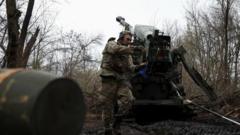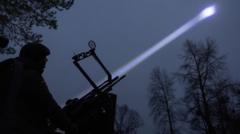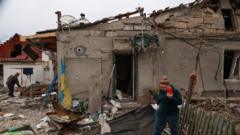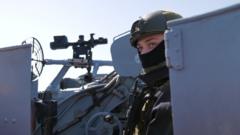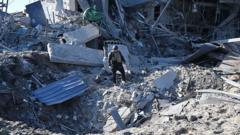The demand for European-made arms has surged as nations reconsider defense spending priorities, particularly since the Russian invasion of Ukraine in 2022. Countries like Kuwait, Poland, and Turkey are increasingly turning to European manufacturers for advanced military technology, signaling a notable shift in the landscape of global military procurement.
European Defense Manufacturing on the Rise Amid Global Shifts

European Defense Manufacturing on the Rise Amid Global Shifts
As geopolitical tensions rise, Europe's defense industry finds new opportunities, producing weapons for international markets and reducing reliance on U.S. military supplies.
Fresh off the assembly line, two Eurofighter jets accelerated down the runway in Turin, Italy, bound for Kuwait—the first foreign buyer of the advanced fighter-bombers manufactured by Leonardo, an Italian defense contractor. This transaction highlights a significant pivot in Europe's military strategy, as nations strive for self-reliance in defense amidst a backdrop of geopolitical tension exacerbated by U.S. foreign policy.
The demand for military equipment has dramatically increased following Russia's invasion of Ukraine in 2022, leading to a revitalized focus on arms production on the continent. Historical preferences for social investment over military expenditure are changing, with European countries now prioritizing security. According to Giancarlo Mezzanatto, a prominent figure at Leonardo, the current U.S. administration's approach towards NATO allies is pushing European nations to consider domestic military manufacturing as a viable alternative to American-made weaponry.
Countries like Poland and Turkey are exploring substantial deals for Eurofighter jets, also referred to as the “Typhoon.” This shift could represent a long-term trend in which European nations seek to strengthen their militaries while cultivating their local defense industries. With international markets opening up, European defense firms are gearing up to broaden their customer base beyond local borders, signaling a transformative phase in the global defense landscape.
As Europe reassesses its defense posture in light of external pressures, the implications for regional security and international arms dynamics are substantial. The transition to increased military production in Europe marks a historical turning point, ushering in a new era of self-reliant defense strategies.





